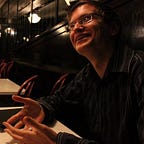A Brief History of the Waltz
Having evolved from one or more peasant dances over several centuries, the exact origins of the waltz are unknown, but the dance as we know it was introduced to high-society Germany and Austria during the late 18th and early 19th centuries. From there, it spread to England and America, where its close embrace and intoxicating feelings of dizziness created quite the scandal. The original Rotary Waltz, based on a pivoting step, turned clockwise and quickly grew in popularity with help from the musical genius of the Strauss family in Vienna.
In the late 19th century, a so-called New Waltz was introduced in Boston, Massachusetts. The New Waltz simplified the waltz footwork to an easy box step, enabling counter-clockwise as well as clockwise rotation.
With the advent of competitive ballroom dancing in the early 20th century, waltz was divided into two categories — the slow Waltz and fast Viennese Waltz — both based on the New Waltz from Boston. In order to stand out from their competition, ballroom dancers invented new steps and styling for each kind of waltz.
At the same time, in Paris, social dancers — who simply dance to have fun, rather than to compete — invented yet another kind of waltz, a slow waltz with a crossing step. Now known as Cross-Step Waltz, this 20th century waltz form is currently undergoing a revival and is the fastest — growing social dance form in the world.
Meanwhile, social dancers have continued to keep the original clockwise Rotary Waltz alive. Even today, Rotary Waltz is danced in a form identical to that which has been danced continuously for more than 200 years, adapting itself to a wide variety of pop music throughout the ages, from “Roses from the South” by Johann Strauss II to “Iris” by the Goo Goo Dolls.
Originally published as “The Waltz” in the Bartlesville Examiner-Enterprise, May 24, 2014, and the program for the 2014 OK Mozart Festival.
For more, including descriptions of 25 different waltzes and hundreds of variations thereof, see Waltzing: A Manual for Dancing and Living by Richard Powers and Nick Enge.
